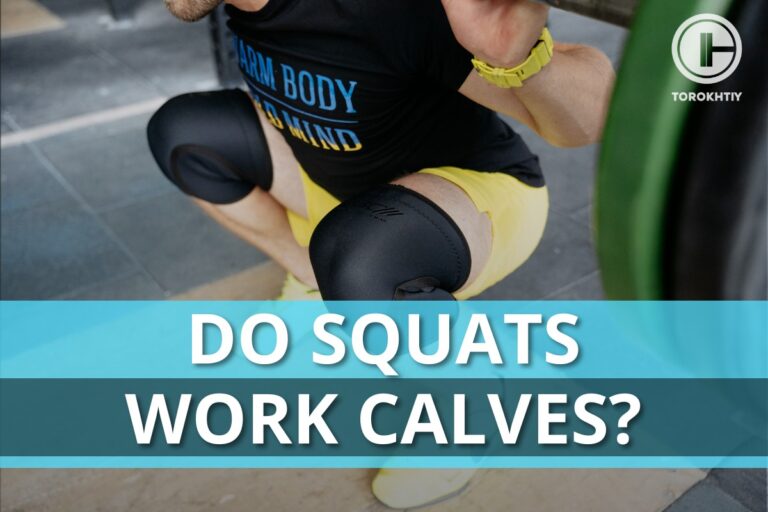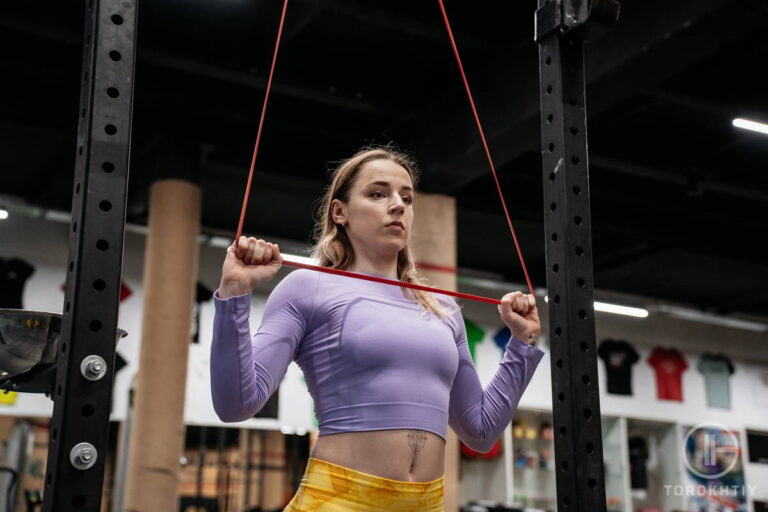Average Deadlift (Deadlift Standards): Tips and Techniques To Improve
Understanding the average deadlift weight and how it relates to deadlift weight standards may give significant insights into many fitness enthusiasts’ strength training experience. In this post, we will look at the aspects that determine average deadlift performance and offer practical recommendations to help you improve your deadlifting ability. You may exceed the average deadlift weight and unleash your entire strength potential by concentrating on perfect form, specific workouts, and steady growth. Stay tuned as we delve into the realm of deadlifting and give useful advice to help you improve your game and help you answer the question “How much should I be able to deadlift?”.
The average deadlift (deadlift standards) varies depending on age, gender, and experience. For beginners and novices, deadlift standards often range from 0.75 to 1.75 times one’s body weight. Individual performance may differ from these broad estimations since men deadlift more than women.
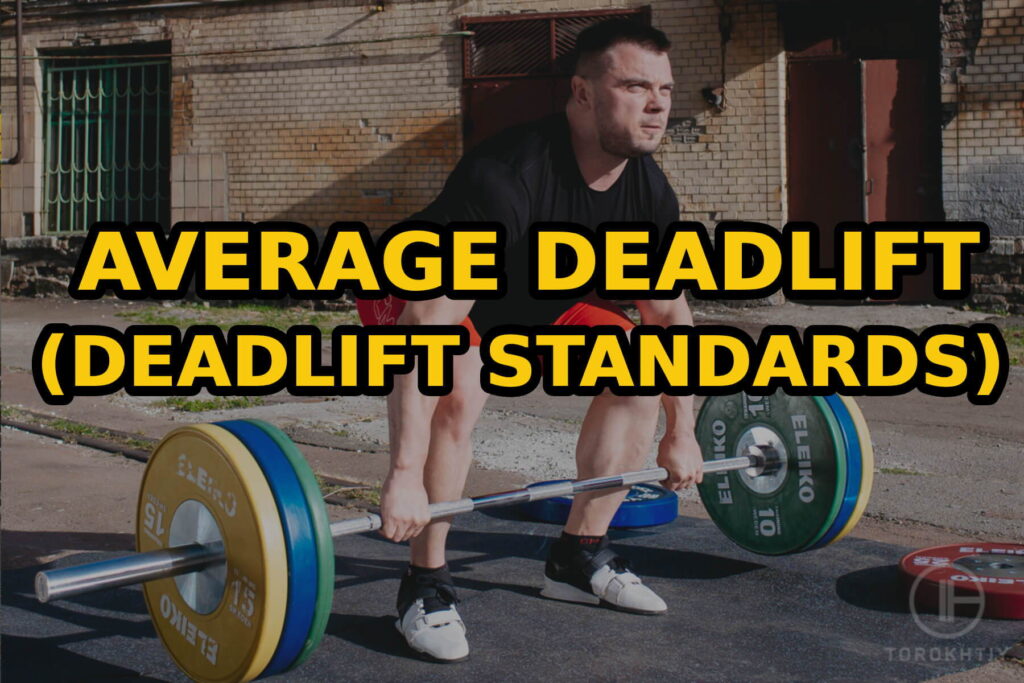
What Do the Deadlift Standards Mean?
Deadlift standards are a set of guidelines that can help you assess your performance and track your progress in the deadlift exercise. Typically, fitness standards are classified based on variables such as sex, age, body mass, and proficiency level. It’s important to evaluate your deadlift performance against established standards to gauge your strength, pinpoint areas for growth, and establish achievable goals for future progress.
There are various factors that can impact an individual’s deadlift standards. It’s important to note that your individual biomechanics can greatly impact your deadlift performance. The weight an individual can lift is influenced by various factors, including limb length, muscle insertion points, and flexibility. Individuals with longer arms and shorter torsos may have a biomechanical advantage when performing deadlifts, allowing them to lift heavier weights compared to those with shorter arms and longer torsos.
Training experience is a crucial factor that affects one’s deadlift standards. As you progress in your deadlift training, your technique, muscle activation, and neural adaptations will improve, resulting in greater strength and lifting ability. Keep up the good work! As one progresses in their lifting journey, deadlift standards typically increase in difficulty, making it a more challenging exercise for seasoned lifters in comparison to novices.
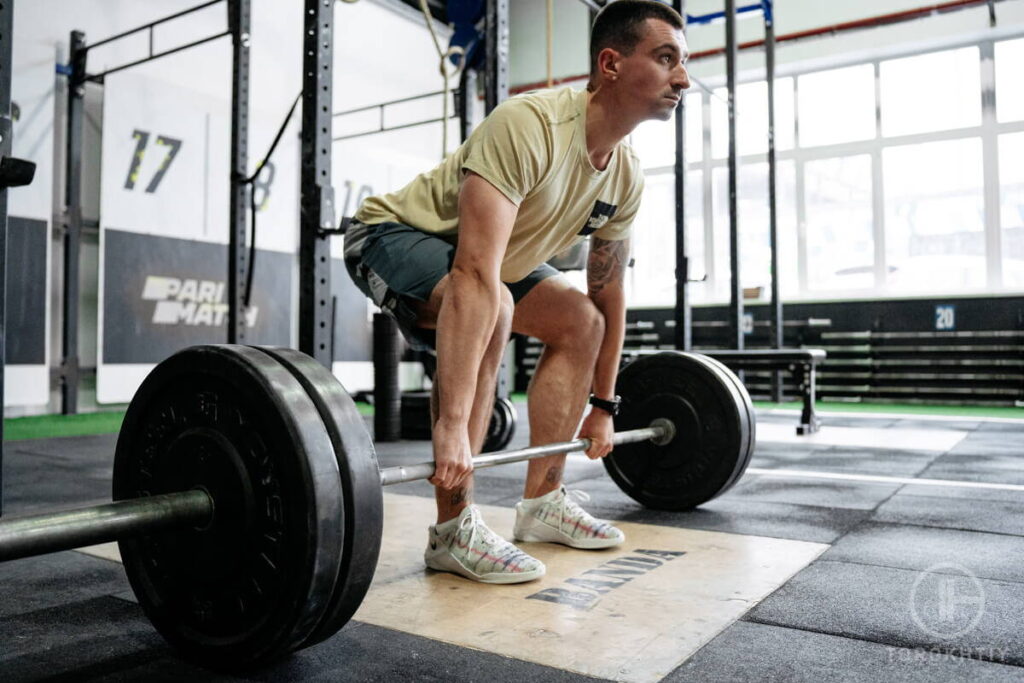
Proper nutrition and adequate recovery are essential factors that significantly impact an individual’s deadlift performance. To achieve optimal muscle growth and recovery, it is crucial to ensure that you are consuming adequate amounts of protein, following a well-balanced diet, and allowing your body sufficient rest. If the individual fails to meet these requirements, their progress may be hindered and their ability to achieve higher deadlift standards may be limited.
Supportive gear, such as belts, straps, or specialized footwear, can have an impact on your deadlift standards. It’s important to keep in mind that while equipment can assist in lifting heavier weights and reaching new heights, relying too heavily on it can hinder the growth of your natural strength and stability.
What Are the Deadlift Standards for Different Levels?
Deadlift standards can be influenced by various factors, including gender, age, body weight, and experience level. As a fitness coach, I recommend following these general guidelines based on your experience level and the combination of your body weight and the weight you lift. These statistics apply to both male and female individuals who engage in weightlifting.
1. Beginner
- Males: 1 to 1.25 times body weight
- Females: 0.75 to 1 times body weight
At this point in the lifter’s journey, they are likely a beginner in the art of deadlifting and are still in the process of mastering the correct form and technique.
2. Novice
- Males: 1.5 to 1.75 times body weight
- Females: 1.25 to 1.5 times body weight
Novice lifters have progressed beyond the beginner stage and are now building their strength foundation. However,there is still ample opportunity to refine their technique and enhance their overall performance.

3. Intermediate
- Males: 2 to 2.5 times body weight
- Females: 1.75 to 2 times body weight
Intermediate lifters have successfully established a strong base in deadlifting and have made significant progressin terms of their physical strength. It’s possible that they have been maintaining a consistent training regimenfor a couple of years.
4. Advanced
- Males: 2.5 to 3 times body weight
- Females: 2 to 2.5 times body weight
Individuals who have attained an advanced level of lifting have dedicated a considerable amount of time and effortto their craft, honing their technique and building impressive levels of strength over time. It is probable thatthey engage in strength-based athletic pursuits, such as powerlifting or strongman events.
5. Elite
- Males: Over 3 times body weight
- Females: Over 2.5 times body weight
When it comes to deadlifting, elite lifters are the pinnacle of performance. Individuals with exceptional strengthoften participate in national or international strength sports competitions.
How Much Can the Average Man and Woman Deadlift?
The average male deadlift, as well as the female deadlift varies greatly due to factors such as age, body weight, and training experience. However, to get a sense of what the typical individual can deadlift, we may look at beginner to novice levels for both men and women.
Deadlift Standards for Men
Assuming an adult male’s average body weight of about 180-200 lbs (81-91 kg), a beginner deadlifting around 180-250 lbs (81-113 kg), and a novice deadlifting around 270-350 lbs (122-159 kg).
Deadlift Standards for Women
Assuming an adult female body weight of around 130-150 lbs (59-68 kg), a beginner deadlifting around 97-150 lbs (44-68 kg), and a novice deadlifting around 163-225 lbs (74-102 kg).

How Much Should I Be Able to Deadlift by Age?
Because elements such as muscle mass, bone density, and hormone levels alter during an individual’s life, deadlift ability might vary dramatically with age. While providing specific deadlift values for each age group is difficult, we can provide some broad suggestions based on experience levels and age-related physical capabilities. Keep in mind that these are rough estimates, and individual results may vary.
Individuals in younger age groups, such as teens and young adults, have greater amounts of growth hormones and a faster healing rate. This allows them to gain strength pretty fast. However, because their musculoskeletal systems are still growing, appropriate technique and progressive advancement are critical to preventing accidents in this age range.
Individuals in their 30s and 40s usually attain a peak in their strength capabilities if they have been constantly training. Muscle mass, bone density, and hormone levels are typically steady at this period, allowing for maximum strength growth. However, as compared to younger age groups, healing rates may begin to diminish.
Individuals in their 50s, 60s, and beyond may see a loss in muscle mass and hormone levels in their later years, which can contribute to diminished strength. Maintaining a consistent strength and mobility exercise regimen, on the other hand, can assist to minimize these age-related decreases and preserve general physical health and well-being.
The following is a general table of deadlift capabilities based on age and amount of experience:
| Age Group | Beginner | Novice | Intermediate | Advanced |
| 14 year old and teens | 0.8-1.2x BW | 1.3-1.6x BW | 1.7-2x BW | 2.1-2.4x BW |
| 20s-30s | 0.9-1.25x BW | 1.5-1.75x BW | 2-2.5x BW | 2.5-3x BW |
| 40s | 0.8-1.1x BW | 1.2-1.5x BW | 1.6-2x BW | 2.1-2.5x BW |
| 50s | 0.7-1x BW | 1.1-1.4x BW | 1.5-1.9x BW | 2-2.4x BW |
| 60s & beyond | 0.6-0.9x BW | 1-1.3x BW | 1.4-1.8x BW | 1.9-2.3x BW |
Note: BW = body weight
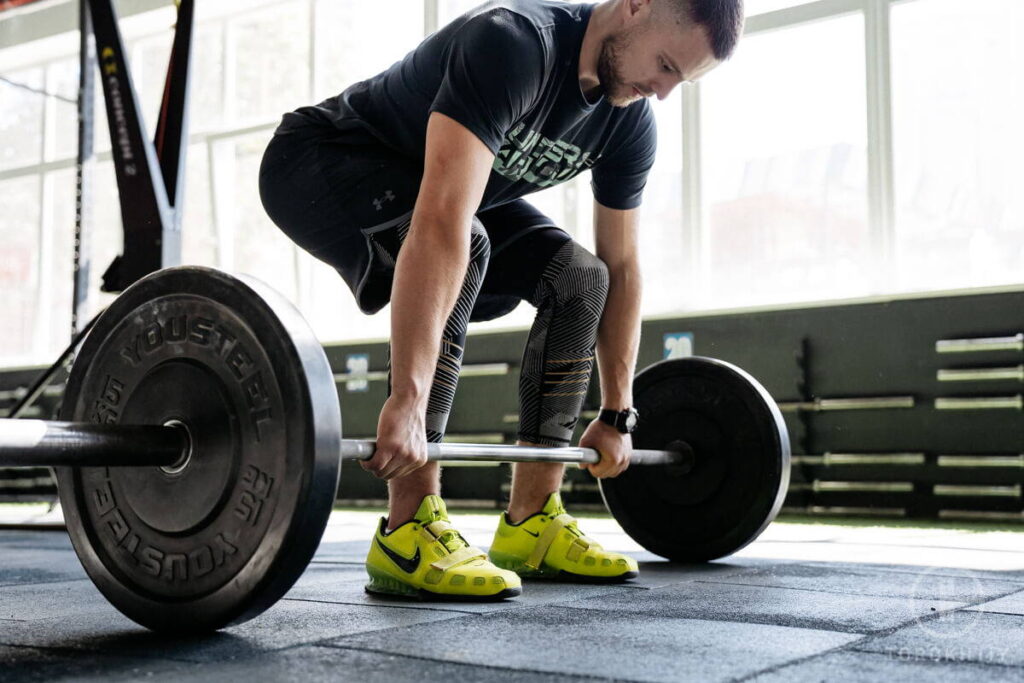
Key Ways to Improve Deadlift Results
To optimize your deadlift performance, it’s crucial to focus on a variety of factors including mastering proper technique, maintaining a consistent training regimen, incorporating targeted accessory exercises, and prioritizing adequate nutrition and recovery. To optimize your deadlift performance, consider implementing the following techniques:
1. Technique
The appropriate technique for the deadlift must be learned and maintained if one is to avoid injury and maximize their performance. Pay attention to maintaining a neutral spine position, activating your lats, pushing into the balls of your feet, and completely extending your hips as you reach the peak of the lift. Working with an experienced coach or trainer can assist you in improving your technique and determining areas in which you may be lacking.
2. Progressive Overload
You may enhance your strength and the effects of your deadlift training over time by gradually increasing the weight you lift, the amount of reps you perform, or the intensity of your workout. Make sure that you raise the intensity of your workout in a measured way so that you can give your body time to adjust without putting yourself at danger of injury.
3. Accessory Exercise
Incorporating accessory movements into your training program is a great way to enhance overall deadlift performance as well as target particular areas of weakness. A few of the most efficient workouts for improving your deadlift include the Romanian deadlift, the rack pull, the deficit deadlift, and the stopped deadlift. In addition, it may be good to perform exercises that focus on your posterior chain muscles (glutes, hamstrings, and lower back), such as glute bridges, hamstring curls, and back extensions.

4. Grip Strength
For the deadlift, having a firm grip is very necessary in order to lift greater weights. Include grip-strengthening exercises like farmer’s walks, dead hangs, and plate pinches in your regular workout routine to increase your overall strength. During your deadlift exercises, you may also practice other grip variants, such as double-overhand grip or mixed grip.
5. Core Stability
When performing heavy deadlifts, it is essential to have a core that is both strong and steady in order to keep perfect technique and avoid injury. Planks, abdominal wheelrollouts, and hanging leg lifts are all excellent workouts for building core strength.
6. Mobility
Improving your deadlift technique and lowering your risk of injury may be accomplished by addressing any mobility limits you may have, particularly in your hips, hamstrings, and ankles. Incorporate targeted mobility exercises as well as dynamic stretching into your regimen for pre-game warming up.
7. Nutrition
Improving your deadlift technique and lowering your risk of injury may be accomplished by addressing any mobility limits you may have, particularly in your hips, hamstrings, and ankles. Incorporate targeted mobility exercises as well as dynamic stretching into your regimen for pre-game warming up.
8. Recovery
Make getting enough rest and recovering quickly a top priority to promote muscle growth and repair. Aim to get between seven and nine hours of sleep per night, and think about including active recovery techniques like foam rolling and mild stretching into your routine in order to help in the regeneration of your muscles.
You may progressively improve the outcomes of your deadlift, increase strength, and reduce the chance of injury if you focus on five important areas. Keep in mind that making improvement takes both time and consistency, so have patience and remain devoted to your workout routine in order to get the most of it.

🔻12-Week Deadlift Strength Program by Oleksiy Torokhtiy
Unlock your true potential with our Deadlift Strength Program!
Designed for athletes by 2-time Olympian Oleksiy Torokhtiy, this 12-week program focuses on enhancing your deadlift strength, strengthening your back and legs.
Program details:
- 12 weeks;
- 3 days / week;
- 45-120 minutes per session;
- 50+ specific exercises;
- Focus on New Result in Deadlift;
- One-time payment, no recuring payments;
- Full access to all training content.
Start now and boost your deadlift results!
FAQ
What Are the Current Deadlift World Records?
The current deadlift world records are as follows:
Standard Bar Deadlift (with deadlift suit & straps) – 501 kg (1,105 lb) by Hafþór Júlíus Björnsson (2020)
Standard Bar Raw Deadlift (no deadlift suit or straps) – 460.4 kg (1,015 lb) by Benedikt Magnússon (2011)
Silver Dollar Deadlift (from 18″ height) (with deadlift suit & straps) – 580 kg (1,279 lb) by Rauno Heinla (2022)
Raw Deadlift – 487.5 kg (1,074.5 lb) by Danny Grigsby (2022)
Deadlift – 549 kg (1,210 lb) by Oleksii Novikov (2022)
Raw Deadlift – 461 kg (1,010 lb) by Benedikt Magnússon (2014)
Is 70 KG Deadlift Good?
A deadlift of 70 kilograms might be regarded as normal for a man lifter who is just starting out, particularly if they are just beginning their adventure into strength training and learning how to maintain perfect technique. A deadlift of 70 kilograms may be considered fairly good for a rookie female lifter because it might already be close to or even surpass their body weight. This is because the beginner’s body weight might be anywhere between the two extremes.
How Much Can an Average Person Deadlift?
Depending on the individual’s build, a man can typically deadlift anywhere from (77 kg – 131) 170 to 290 pounds when performing a traditional variation of the exercise. The typical average deadlift weight for female is around half of their body weight, while intermediate lifters are able to deadlift approximately 1.5 times their body weight.
Conclusion
Understanding how much you should be able to deadlift and how much can the average man deadlift is important for evaluating your development and establishing reasonable objectives. You may improve your deadlift performance and break past personal limitations by applying the suggestions and techniques outlined in this article. Remember that everyone’s strength journey is different, and the most important thing is to make steady development while prioritizing appropriate technique and safety. Finally, pursuing a stronger deadlift is about more than just attaining a certain weight or outperforming the average; it’s about embracing the challenge, building discipline, and reaping the numerous advantages of strength training.
Feel free to ask us anything you want about this topic or share your thoughts on the subject using the comment section below!
Also read:
- Deadlift Feet Position
- Good vs Bad Deadlift Form
- Why Is Sumo Deadlift Easier
- Deadlift vs Rack Pull
- Functional Fitness Deadlift Workouts
- What Muscles Does Deadlift Work
- Sumo vs Conventional Deadlift
- Deadlift Program
References:
- What Muscles Do Deadlifts Work? // Healthline: https://www.healthline.com/ health/fitness-exercise/deadlift-muscles-worked
- How to Do a Deadlift: Proper Form, Variations, and Common Mistakes // Verywellfit: https://www.verywellfit.com /how-to-do-the-deadlift-3498608
- 8 Benefits of Deadlifts You Probably Never Knew About // Healthline: https://www.healthline.com /health/fitness/deadlift-benefits
- The Deadlift and Its Application to Overall Performance // Guinnessworldrecords: https://www.guinnessworldrecords.com /world-records/heaviest-deadlift
- 7 World Record Deadlift Feats of Strength You Didn’t Know // Hashimashi: https://hashimashi.com /world-record-deadlift/
- Watch World’s Strongest Man Oleksii Novikov Deadlift 549kg to Break the World Record // Manofmany: https://manofmany.com/ lifestyle/fitness/ oleksii-novikov-deadlift-world-record
- Average Deadlift Weight For Men And Women: The Complete Guide // Boxlifemagazine: https://boxlifemagazine.com /average-deadlift-weight/
Why Trust Us?
With over 20 years in Olympic Weightlifting, our team does its best to provide the audience with ultimate support and meet the needs and requirements of advanced athletes and professional lifters, as well as people who strive to open new opportunities and develop their physical capabilities with us.
By trusting the recommendations of our certified experts in coaching, nutrition, dietology, and sports training programming, as well as scientific consultants, and physiotherapists, we provide you with thorough, well-considered, and scientifically proven content. All the information given in the articles concerning workout programming, separate exercises, and athletic performance, in general, is based on verified data. We ensure that you can rely on our professionals’ pieces of advice and recommendations that can be treated as personalized ones which will benefit you and fully meet your needs.
The product testing process is described in more detail here
Author: Sergii Putsov
Head of Sport Science, PhD
Best Results: Snatch – 165 kg,
C&J – 200 kg
Sergii Putsov, Ph.D., is a former professional weightlifter and National team member, achieving multiple medals in the 94 kg weight category at national competitions. With a Master’s degree in “Olympic & Professional Sport Training” and a Sport Science Ph.D. from the International Olympic Academy, Greece, Sergii now leads as the Head of Sport Science. He specializes in designing training programs, writing insightful blog articles, providing live commentary at international weightlifting events, and conducting educational seminars worldwide alongside Olympic weightlifting expert Oleksiy Torokhtiy.



